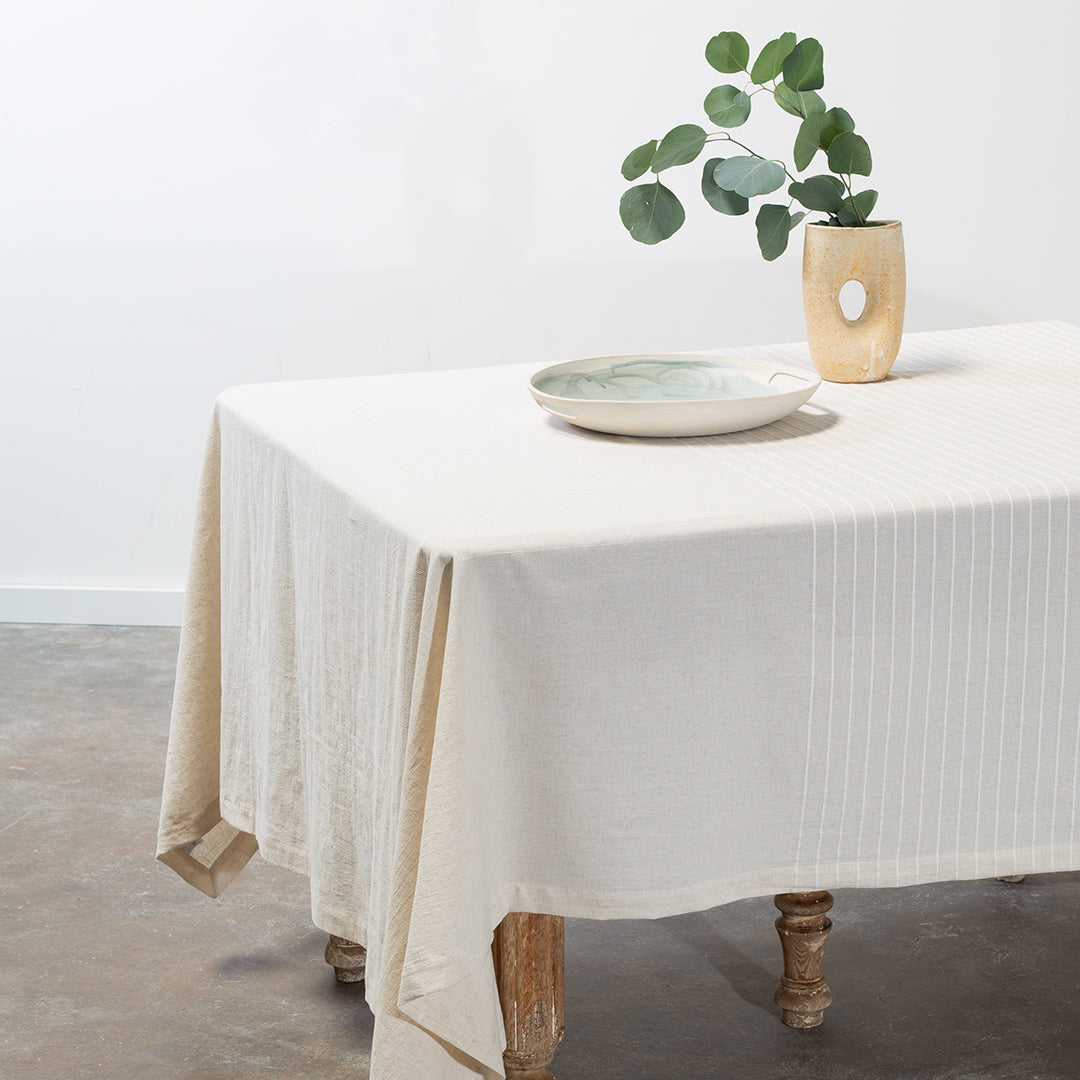Bed Linen Fabric Advancements: Discovering Modern Trends and Creative Applications in Design and Textile Market
From sustainable manufacturing techniques to cutting-edge weaving technologies, the advancement of linen is reshaping the landscape of the fabric market. As we delve right into the worlds of innovative layout applications and the development of bed linen blends and hybrid fabrics, a brand-new phase unravels in which bed linen's duty in future textile developments takes center stage.
Lasting Practices in Bed Linen Production
Sustainable techniques in bed linen production have come to be significantly vital in the textile industry's initiatives to reduce environmental impact and advertise honest sourcing methods. Bed linen, a natural fiber derived from the flax plant, supplies a variety of benefits such as biodegradability, breathability, and resilience. Nevertheless, traditional approaches of linen manufacturing can involve substantial water consumption, chemical use, and energy-intensive procedures.
To address these difficulties, many textile manufacturers are embracing lasting practices throughout the bed linen manufacturing process. This consists of sourcing flax from organic farms that stay clear of damaging chemicals and chemicals, executing water-efficient retting methods to extract fibers from the flax stalks, and using environmentally friendly dyes and coatings. Additionally, some business are buying renewable energy resources to power their production facilities and minimizing waste via recycling and upcycling initiatives.
Technological Innovations in Linen Weaving
With the growing focus on lasting techniques in linen production, the textile market is currently observing a surge in technological innovations especially aimed at transforming the art of bed linen weaving. These technologies are improving the method linen materials are created, supplying raised efficiency, quality, and creativity in weaving methods.
Among the crucial technical advancements in linen weaving is the integration of computerized looms. These advanced looms are equipped with software program that permits detailed and intricate layouts to be woven with accuracy. By digitizing the weaving procedure, makers can accomplish higher uniformity and accuracy in their linen fabrics.
Furthermore, developments in yarn spinning modern technology have actually made it possible for the manufacturing of finer and even more resilient linen yarns - table cloths. This causes softer and smoother bed linen materials that retain their top quality also after numerous uses and washes
In addition, the growth of eco-friendly dyeing processes and finishes for bed linen materials is acquiring traction. These lasting methods not only lower the ecological impact yet likewise cater to the enhancing consumer need for ethically generated fabrics.
Creative Design Applications for Bed Linen
Ingenious artistic strategies are progressively shaping the imaginative design applications for bed linen in the textile sector. Designers are pressing the borders of standard linen usage, exploring its flexibility in numerous applications. One noticeable trend is the assimilation of bed linen in sustainable style lines, where its environment-friendly properties are highlighted. Bed linen's natural aesthetic allure and ability to mix with other materials make it a favored choice for developing unique garments and devices that provide to the ecologically aware consumer.
Furthermore, developers are trying out linen in home decor, utilizing its breathable and long lasting nature to craft fashionable furnishings such as curtains, bed linen, and upholstery. The appearance and drape of bed linen bring a feeling of sophistication and comfort to interior spaces, adding a touch of beauty to contemporary homes.

Bed Linen Blends and Hybrid Fabrics

Hybrid fabrics, on the various other hand, take the idea of Bonuses blending an action better by integrating extra elements such as metal threads, recycled products, or conductive fibers. These cutting-edge textiles not just broaden the design opportunities however also present practical aspects like conductivity, antimicrobial residential or commercial properties, or enhanced toughness. Hybrid fabrics are significantly being used in numerous industries, consisting of fashion, indoor style, and technological fabrics, where the need for multifunctional materials gets on the increase.
Bed linen's Function in Future Fabric Innovations

In the realm of future textile technologies, linen is expected to be a crucial gamer in the development of sophisticated practical textiles. Researchers and designers are discovering ways to improve bed linen's integral qualities through technological improvements, such as including clever textiles, nanotechnology, and performance finishes. These advancements intend to boost bed linen's performance attributes, making it suitable for a more comprehensive variety of applications, from activewear to protective clothes.
Additionally, the mix of bed linen with various other all-natural or synthetic fibers opens up limitless opportunities for producing unique fabrics with special buildings and functionalities. By leveraging bed linen's features and discovering cutting-edge blends, the fabric sector is positioned to introduce interesting advancements that satisfy developing consumer needs and sustainability requirements.
Verdict
Finally, the expedition of sustainable practices, technological advancements, imaginative layout applications, linen blends, and its role in future textile technologies highlight the continual advancement of linen fabric in the modern-day layout and textile industry. With a concentrate on advancement and imagination, the versatility and eco-friendly nature of bed linen make it a useful material for manufacturers and designers alike, leading the way for more growths and advancements in the field of textiles.
As we delve into the worlds of imaginative layout applications and the appearance of bed linen blends and crossbreed textiles, a brand-new chapter unravels in which linen's duty in future textile innovations takes facility stage.
Checking out the fusion of bed linen with other materials has led to the introduction of ingenious blends and hybrid fabrics in the modern fabric market. Bed linen blends supply a special mix of the attributes of bed linen with those of other fibers, resulting in link textiles that look these up possess boosted residential properties such as increased longevity, improved draping, and minimized wrinkling.The evolution of linen blends and crossbreed textiles has set the phase for Bed linen to play a critical duty in driving future fabric developments.In the world of future fabric innovations, linen is expected to be a crucial player in the development of advanced practical materials.